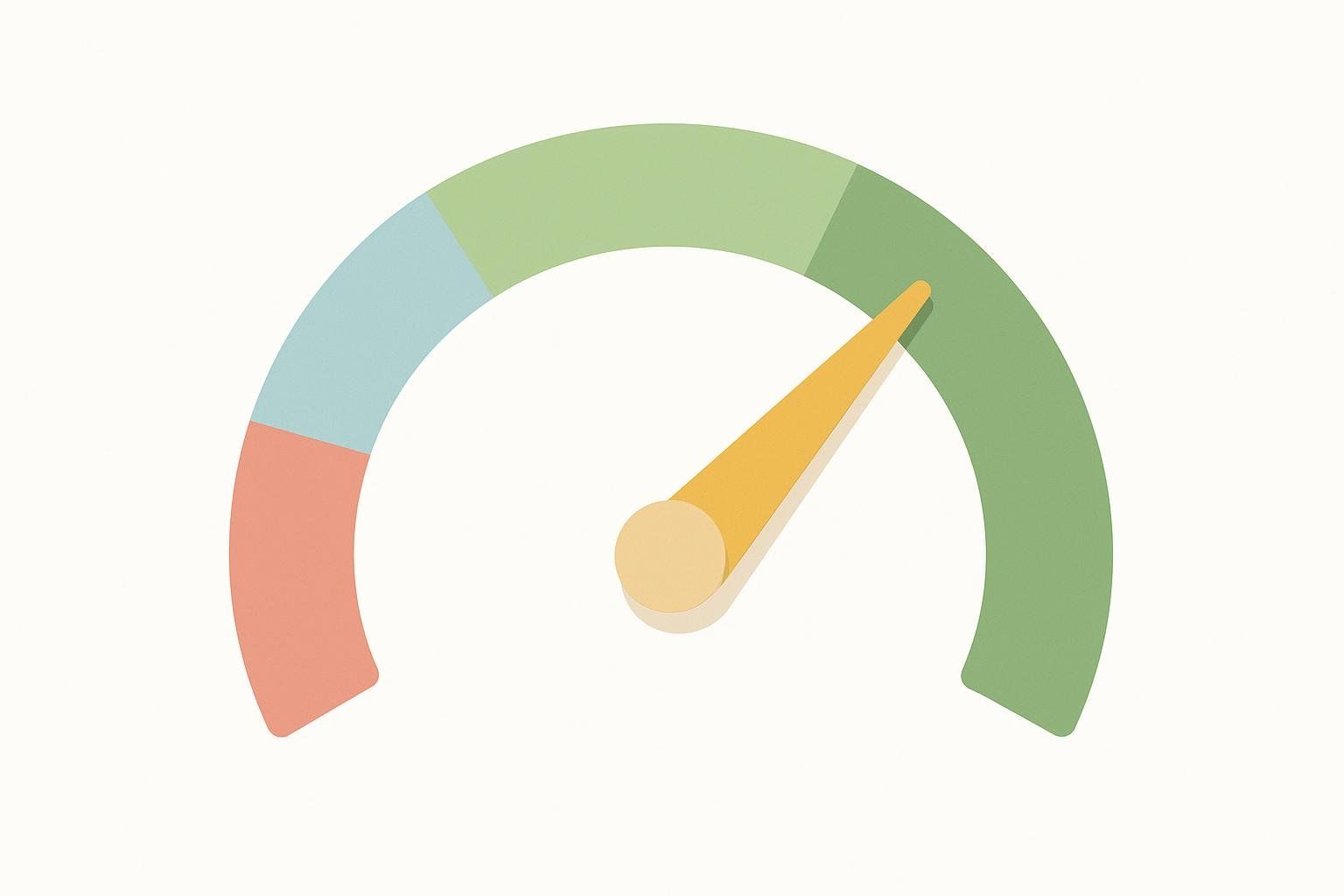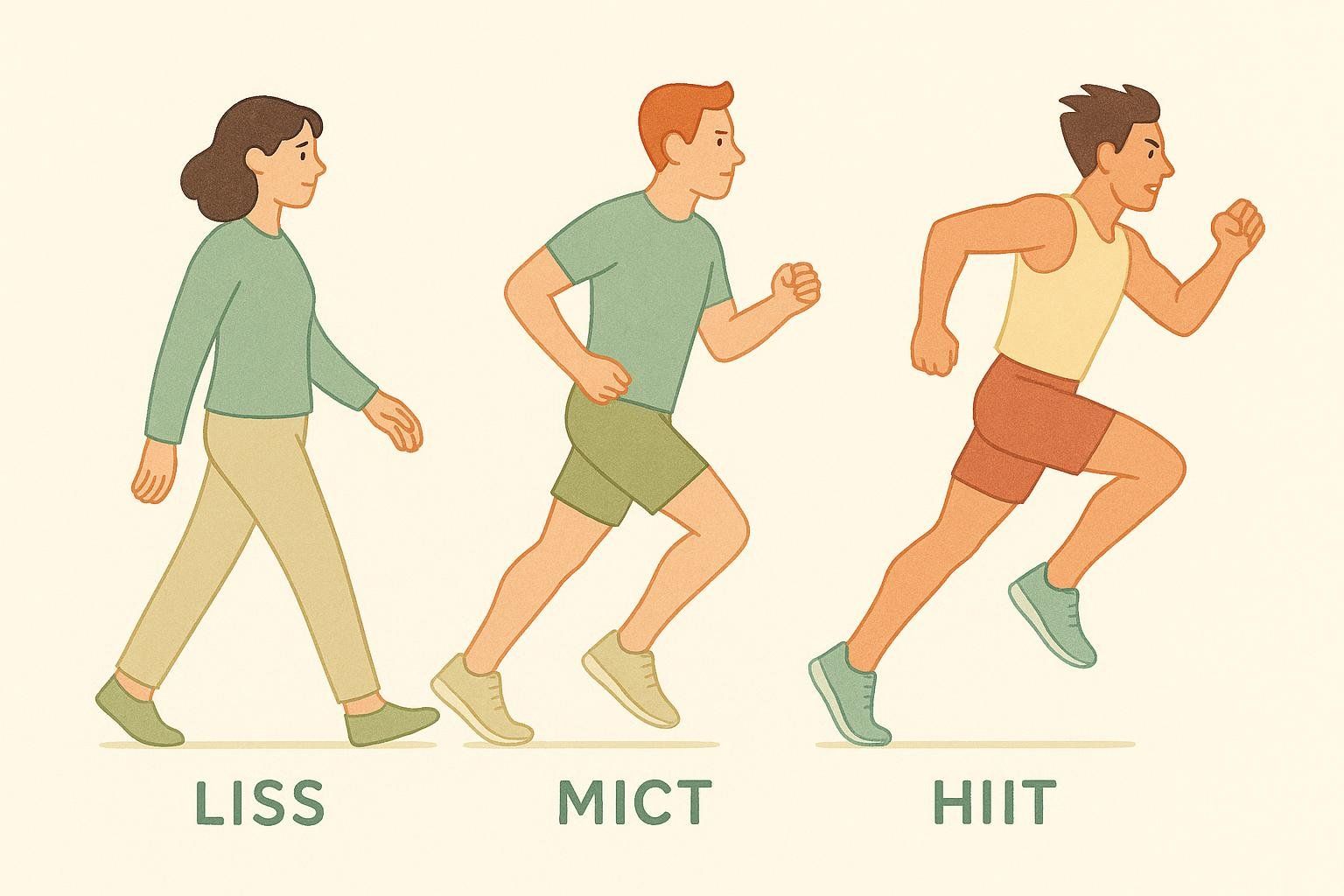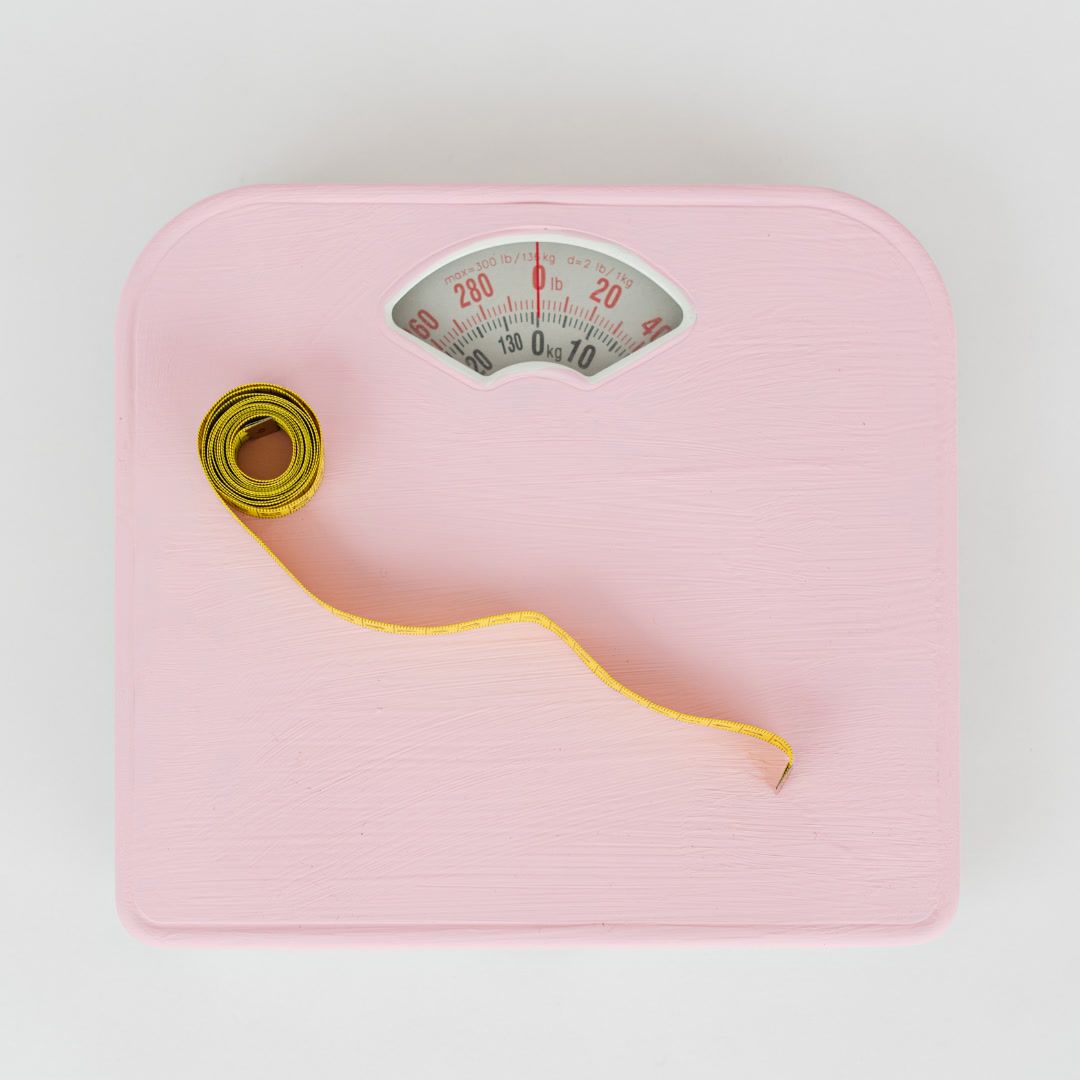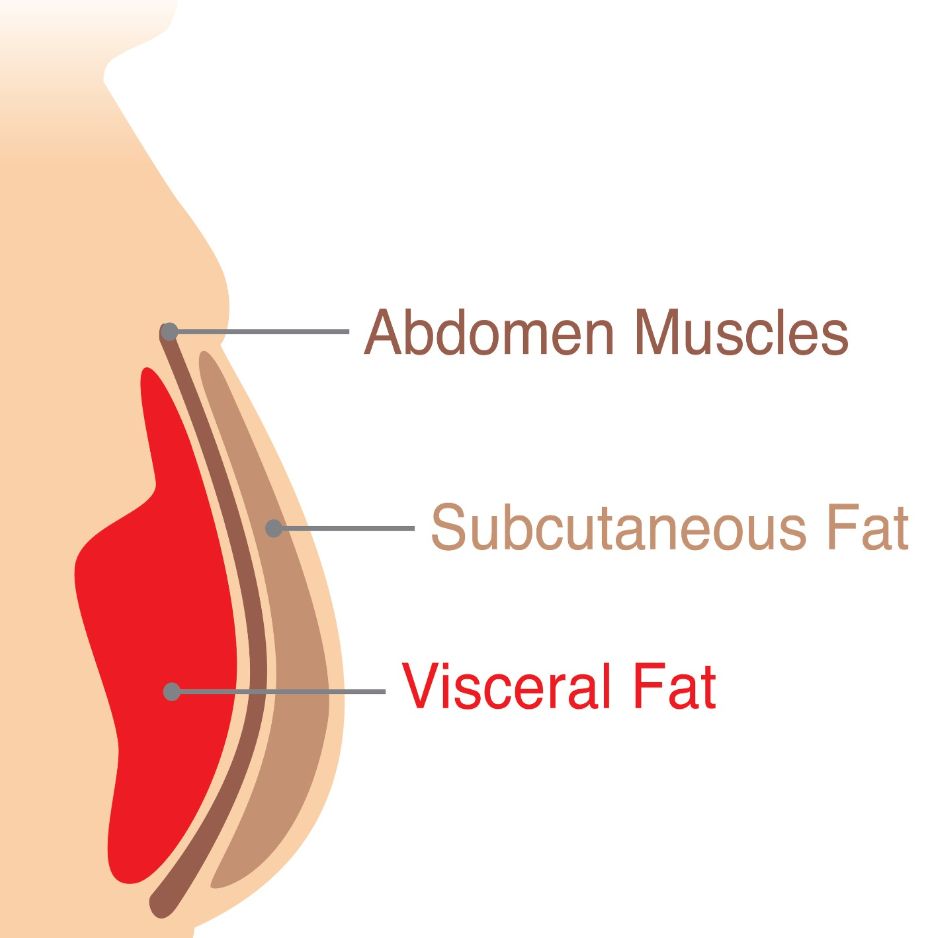Cardio Workouts: At-Home & Gym Routines Guide

Cardio Workouts: At-Home & Gym Routines Guide
Want to effectively burn calories, strengthen your heart, and boost your energy — without feeling chained to a treadmill? This flagship guide breaks down everything you need to know about cardio workouts, whether you’re squeezing in body-weight circuits between Zoom calls or planning a VO₂-max-boosting interval session at the track.
We’ll cover science-backed benefits, step-by-step routines for every level, and pro tips on tracking progress with BodySpec’s data tools. Ready to get your heart pumping? Let’s dive in.
Quick Takeaways
- Adults should aim for 150 minutes of moderate cardio or 75 minutes of vigorous cardio per week — the American Heart Association guidelines.
- Mixing Low-Intensity Steady State (LISS), Moderate-Intensity Continuous Training (MICT), and High-Intensity Interval Training (HIIT) keeps workouts fresh and targets different energy systems.
- A 2024 meta-analysis found that HIIT can significantly improve VO₂ max and lower body-fat percentage versus traditional training.
- Use heart-rate zones or the Rate of Perceived Exertion (RPE) scale to nail the right intensity and avoid burnout.
- Objective metrics from a BodySpec DEXA scan and VO₂ max testing provide the clearest picture of how your cardio plan is reshaping your body and fitness.
Why Cardio Matters

Cardiovascular exercise challenges your heart, lungs, and circulatory system to transport oxygen more efficiently. Over time, that translates to:
| Benefit | How Cardio Delivers |
|---|---|
| Lower risk of heart disease & stroke | Improves blood-flow dynamics and cholesterol profile |
| Easier weight management | Burns calories and increases post-exercise oxygen consumption |
| Better mood & stress relief | Releases endorphins and reduces cortisol |
| Sharper cognition | Enhances blood flow to the brain |
| Stronger bones | Weight-bearing cardio (jogging, dancing) stimulates bone remodeling |
Skipping cardio altogether? Older sedentary adults see a 32% higher risk of premature death compared with active peers (AHA press release).
How Much Do You Really Need?

The AHA and Physical Activity Guidelines for Americans agree on these minimums:
- 150 – 300 min/week of moderate aerobic activity (think brisk walking, easy cycling)
- OR 75 – 150 min/week of vigorous aerobic activity (running, spin class, HIIT)
- PLUS two strength training sessions for muscular health
More movement = more benefits, but consistency trumps perfection. Even 10-minute cardio “snacks” sprinkled through your day add up.
Meet Your Cardio Training Styles
| Style | Intensity | Typical Duration | Best For | Sample Session |
|---|---|---|---|---|
| LISS | 50–65% max heart rate | 30–60 min | Active recovery, beginners | 45-min brisk walk |
| MICT | 65–75% max HR | 20–45 min | Weight loss, endurance | 30-min jog |
| HIIT | 80–95% max HR (intervals) | 10–30 min | VO₂ max, time-crunched | 10 rounds: 30-sec sprint / 90-sec walk |
| Circuit/MetCon | 70–90% max HR | 15–40 min | Full-body conditioning | 5 moves × 45-sec each, 3 rounds |

Not sure which one burns more calories for you? Plug any activity into our Calorie Burn Calculator for a personalized estimate.
Beginner 30-Minute At-Home Cardio (No Equipment)

Perfect for: Time-strapped newbies or return-to-fitness movers
| Block | Exercise | Duration |
|---|---|---|
| Warm-up | March in place, Arm circles | 3 min |
| Circuit × 3 | Jumping jacks, Body-weight squats, High-knee march, Standing toe-touch reach | 40 sec on / 20 sec off each |
| Finisher | Slow mountain climbers — 4 rounds of 20 sec on / 10 sec rest | 2 min |
| Cool-down | Deep breathing, Calf stretch | 3 min |
Coaching cues
- Aim for RPE 6/10 (you can talk but not sing).
- Modify impact (step-out jacks) if joints protest.
- Schedule 4 sessions per week and add one extra circuit every two weeks.
For more joint-friendly options, check out our Low-Impact Cardio Guide.
Intermediate 45-Minute Variety Session (Gym or Outdoors)

Perfect for: Recreational exercisers craving structure and boredom-proof variety
| Segment | Modality & Intensity | Duration |
|---|---|---|
| Warm-up | Dynamic mobility | 5 min |
| LISS | Row or brisk walk @ 60% HR max | 10 min |
| MICT | Jog or cycle @ 70% HR max | 20 min |
| HIIT | 1:1 intervals @ ~85% HR max | 10 min |
| Cool-down | Easy walk + stretching | 5 min |
Tracking tip: Use the VO₂ Max Chart to see where your current pace stacks up.
Advanced 20-Minute HIIT to Boost VO₂ Max

Perfect for: Athletes and data-driven individuals chasing performance PRs
| Interval | Effort | Notes |
|---|---|---|
| 5 min | Dynamic warm-up | Mobility lunges, skips |
| 10 × (30-sec all-out / 90-sec walk) | 90–100% HR max | Aim for consistent, maximal effort in each sprint |
| 3 min | Cool-down jog | Bring HR below 120 bpm |
If you’re plateaued, sprinkle this workout in twice weekly during a 6-week block.
Need more ideas? Explore our Ultimate HIIT Hub.
Build-Your-Own Cardio Plan
The simplest way to program cardio volume is by minutes at each intensity. Use the steps below, then compare two sample weeks.
3-Step Formula
- Pick 3–4 total cardio days.
- Assign 1 HIIT + 1 MICT + 1 LISS (add a fourth of your favorite style).
- Ensure weekly totals hit either ≥ 150 moderate minutes or ≥ 75 vigorous minutes (or a mix where 1 min vigorous ≈ 2 min moderate).
Sample Week A — Beginner Weight-Loss Focus (Sarah)
| Day | Session | Minutes |
|---|---|---|
| Mon | LISS brisk walk | 40 |
| Wed | MICT jog | 30 |
| Fri | HIIT body-weight circuit | 20 (vigorous) |
| Sat | LISS hike | 60 |
| Weekly Goal | Met: 130 moderate + 20 vigorous |
Sample Week B — Intermediate Endurance Focus (John)
| Day | Session | Minutes |
|---|---|---|
| Tue | MICT cycling | 40 |
| Thu | HIIT track sprints | 25 (vigorous) |
| Sat | LISS recovery walk | 45 |
| Sun | MICT steady run | 35 |
| Weekly Goal | Met: 120 moderate + 25 vigorous |
Adjust durations upward every 2–3 weeks or add a fourth cardio day when sessions start to feel too easy.
Pro tip: Use our guide to understanding VO₂ max to set pace targets.
Tracking Progress: Numbers That Matter

| Metric | Why It’s Useful | How to Measure |
|---|---|---|
| Resting HR | Drops 5–10 bpm with consistent cardio | Morning pulse with fitness tracker |
| VO₂ Max | Gold standard for endurance | Lab test or wearable estimate |
| Body Fat % | Confirms fat-loss vs. muscle loss | DEXA scan every 8–12 weeks |
| Visceral Fat Score | Tracks the “dangerous” belly fat | Included in BodySpec DEXA |
Fuel & Recovery Basics

- Carbs are your friend pre-workout: Consume 30–60 g of easily digestible carbohydrates 30–60 minutes before intense exercise to top off glycogen stores (NASM nutrition guidelines).
- Protein is your repair crew: Aim for 0.7–1 g per pound of lean mass (≈ 1.6–2.2 g/kg) daily to maximize muscle protein synthesis (ISSN position stand).
- Hydrate early and often: A > 2 % body-mass water loss impairs performance (ACSM position stand).
- Sleep 7–9 hours nightly; athletes performing multiple hard sessions may benefit from ≥ 9 hours (Sleep Foundation).
- Active recovery (easy walks, mobility) keeps blood moving and reduces soreness.
For deeper dives, read The Importance of Rest Days and Active Recovery.
Common Cardio Mistakes to Avoid

- Hammering HIIT daily. More isn’t better; adaptation happens on rest days.
- Ignoring intensity cues. If you can’t say a full sentence, you’re not in LISS.
- Skipping strength training. Cardio + muscle work is the body-composition dream team.
- Same workout, every day. Variety prevents plateaus and overuse injuries.
- No objective tracking. “Feelings” deceive; data doesn’t.
Explore More Cardio Resources
- Steady-State Cardio: Benefits & Training Guide
- Best Cardio for Fat Loss — Science-Backed Guide
- Calories Burned Calculator
Ready to See the Results?
Find your nearest BodySpec center and book your scan.
By pairing consistency with data, you can unlock your true fitness potential.


